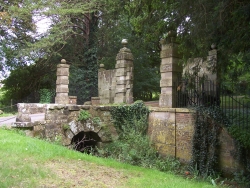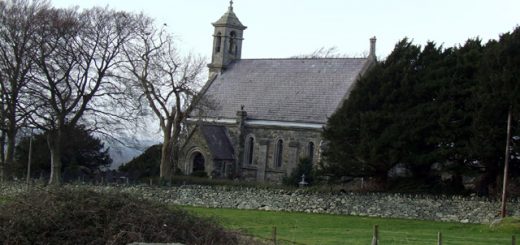Boggart Hole Clough
The clough was in former times, said to be haunted by a boggart, and there are a number of stories attached to it. Some of these tales probably became attached to the area after they had been written about other similar boggart infested places.
 The tale that is most often told about it mentions a Boggart infested farm, which became so haunted that the farmer and his family were forced to leave. As he was passing his neighbours house with a loaded cart his neighbour asked if they were leaving, the farmer replied “Aye we’re flitting” only to have the words repeated out of thin air. The farmer, realising that the boggart was following them had no choice but to return to the house.
The tale that is most often told about it mentions a Boggart infested farm, which became so haunted that the farmer and his family were forced to leave. As he was passing his neighbours house with a loaded cart his neighbour asked if they were leaving, the farmer replied “Aye we’re flitting” only to have the words repeated out of thin air. The farmer, realising that the boggart was following them had no choice but to return to the house.
Jennifer Westwood in her book Albion suggests that the story originated in a book by Croften Croker (Fairy legends) who tells the same story about an Irish Leprechaun. Croker gave the story to J. Roby who included it about Boggart Hole Clough in his book Lancashire Traditions, probably to have a good story to go with the name of Boggart Hole.




Re: Boggart Hole Clough
‘Lancashire Folk-lore’ (1867) by John Harland and T. T. Wilkinson.
"Not far from the little snug, smoky village of Blakeley or Blackley, there lies one of the most romantic of dells, rejoicing in a state of singular seclusion, and in the oddest of Lancashire names, to wit, the ‘Boggart Hole.’ [In the present generation, by pleonasm, the place is named ‘Boggart Hole Clough.’] Rich in every requisite for picturesque beauty and poetical association, it is impossible for me (who am neither a painter nor a poet) to describe this dell as it should be described; and I will, therefore, only beg of thee, gentle reader, who, peradventure, mayst not have lingered in this classical neighbourhood, to fancy a deep, deep, dell, its steep sides fringed down with hazel, and beech, and fern, and thick undergrowth, and clothed at the bottom with the richest and greenest sward in the world. You descend, clinging to the trees, and scrambling as best you may, and now you stand on haunted ground! Tread softly, for this is the Boggart’s Clough, and see, in yonder dark corner, and beneath the projecting mossy stone, where that dusky sullen cave yawns before us, like a bit of Salvator’s best, there lurks that strange elf, the sly and mischievous Boggart. Bounce! I see him coming; oh no, it was only a hare bounding from her form; there it goes—there!"—Such is the introduction to a tale of a boggart, told by Crofton Croker, in Roby’s Traditions of Lancashire; but which, if memory serve us faithfully, is but a localized version of a story told of an Irish sprite, and also of a Scotch brownie; for in all three tales when the farmer and his family are "flitting" in order to get away from the nocturnal disturbance, the sprite pops up his head from the cart, exclaiming, "Ay, neighbour, we’re flitting!" Tradition, which has preserved the name of the clough selected by the Lancashire boggart for his domicile, has failed to record any particular pranks of this individual elf, and we can only notice this charming little clough, as conveying by its popular name the only remaining vestige of its lost traditions. Perhaps the best story of this clough is that graphically told by Bamford of three friends seeking by a charm (consisting in gathering three grains of St. John’s fern seed there), to win for one of them the love of a damsel who was indifferent to him.